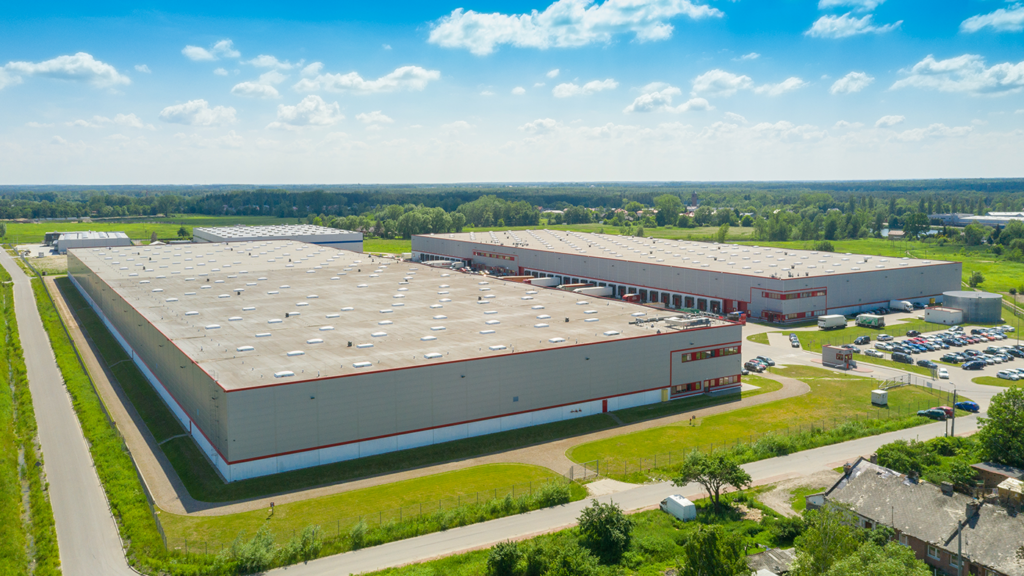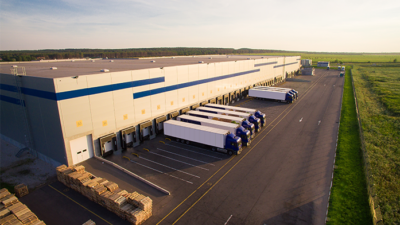In 2024, our industrial capital markets experts anticipate an ever-evolving real estate landscape. They foresee an active market shaped by strategic factors like interest rate fluctuations, market dynamics, and a diverse range of investable assets. Explore their insights into capital evaluation, investor sentiment, and regional market trends across the Southeast, West, Midwest, and Northeast regions.
Q. Are you seeing any changes in activity in the new year, compared to 2023? If so, what are they?
Ryan Vaught (Southeast): There has been a significant uptick in capital evaluating speculative development deals, though it’s hard to delineate how much of this activity turns into actual capital deployment. The other meaningful change is in the trailing 60 days, there has been more capital appetite for longer Weighted Average Lease Term (WALT) stabilized offerings whereas in 2023, the majority of the interest was in short WALT (less than 3 years) offerings.
Mike Kendall (West): Investor sentiment has seen a significant boost since 2023 as optimism prevails regarding a soft landing in the market, despite rising vacancy rates due to oversupply and reduced demand. There’s a growing consensus on core cap rates expected to drop to the low 5% range in key markets like Southern California and Northern New Jersey while second and third-tier markets are anticipated to return to normal spreads. Additionally, factors such as West Coast port stability, expansion in the active lender pool, and the shift to reshoring have been driving forces for positive growth in California. We’re also seeing an increase in sale data points fostering greater pricing consensus, a trend likely to continue with a high volume of Broker Opinion of Values hitting the market.
Jeff Devine (Midwest): In the Midwest, there are twice as many active buyers in the market compared to the prior year. There’s also an increased number of sellers evaluating sales but still muted “green-lighted” sales initiatives in the first 45 days. While Chicago has been notably quiet on new deals brought to market in Q1, a number of institutional trades have occurred on opportunities that were brought to market in 2023 and subsequently pulled. Bid lists on new opportunities in secondary Midwestern markets have been incredibly healthy, as institutions have returned with the belief that the worst of the interest rate volatility of ‘22/’23 is now behind us. While some micro-locations in the Midwest will struggle with oversupply and slowing absorption, we remain very positive about the direction of the industrial capital markets as new deals continue to come online.
Michael Blunt (Northeast): Transaction activity seems consistent with last year’s activity so far this year. New investment opportunities have hit the market, both building acquisitions and JV equity offerings, but deal volume to date appears consistent with 2023.
Q. Is there pent-up demand, where we might see investors more willing to transact this year, despite the interest rate environment?
Ryan Vaught (Southeast): There is pent-up demand 100%, and we expect to see a push-pull phenomenon where capital balances are waiting on the forecasted declining interest rates, while simultaneously monitoring the asset class fundamentals potentially deteriorating in the short term. For example, vacancy in the Southeast rose 48 bps when comparing Q4 to Q3. We do not believe there to be any shortage of liquidity.
Mike Kendall (West): There is certainly a renewed enthusiasm for acquisitions. “Pent-up” implies pressure, and although there is above-normal motivation to place capital in select cases, investors remain disciplined in their underwriting and investment thesis. While the interest rate environment hampered investment in the later part of 2023, the forecast for 2024 is a decline in interest rates. This growing optimism combined with pricing normalization (or price capitulation) on the part of sellers, has pushed investors off the sideline as they face mounting requirements to spend dry powder. 2021 and 2022 are widely regarded as bubble years where socio-economic shifts created by the pandemic and subsequent government stimulation caused an unsustainable boom for industrial real estate. In 2024, rates should stabilize and more normalized leasing/demand fundamentals will come back into focus.
Jeff Devine (Midwest): Stability in the treasury markets is essential. Only when buyers and lenders feel confident in the treasury market’s stability will they sharpen their pencils and become more aggressive in competing to deploy funds. The institutional activity and conversations with investors that we’ve had in the first two months of 2024 would suggest that confidence is quickly coming back. A number of deals have priced across the Midwest early in Q1 with double-digit bid sheets, and it appears that competition is slowly but surely returning to the market. While some of this could be attributed to a lack of new deals overall, the general feedback that we’ve gotten from investors over the last two months has been optimism and a readiness to deploy pent-up capital as the capital markets stabilize.
Michael Blunt (Northeast): We are definitely seeing pent-up demand as investor engagement on new offerings is more active, however, time will tell whether this activity translates into an uptick in closed transactions.
Q. If deals are being marketed for sale, are they newer, Class A assets, or perhaps older, Class B assets?
Ryan Vaught (Southeast): In 2023, we saw “older” product move more frequently due to the mark-to-market opportunity that was more prevalent. As we enter 2024, there is a pretty equivalent ratio of A versus B product on the marketplace. The largest shift we have seen in capital flows is a deeper bid list and therefore stronger pricing on “in-market” product versus “out-of-market” (tertiary) product. Core capital is also dipping its toes back into the market buoying values on the Class A assets.
Mike Kendall (West): There’s no defining characteristic to the deals that are being brought to market. Different sellers have different motivations. The class A product that we do see coming to market will likely come from merchant developers who are executing a build-lease-sell strategy or are dealing with financing challenges on newly built, but un-leased projects. Similarly, some institutional investors are still coping with redemption challenges. To get ahead of these issues, they may elect to trade their most liquid assets which in most cases is high quality industrial. That said, the most active buyers at present have value-add and core plus money to spend, meaning they require higher returns to invest in a given deal. In some cases, the better execution for a seller searching for liquidity from their industrial portfolio may be to prune class B/C assets with some value-add “juice” for the next investor to capture at a later date, as these profiles could attract a larger pool of bidders.
Jeff Devine (Midwest): The market response is diverse. There’s a noticeable uptick in interest for longer-term leased core deals, particularly if they’re priced to neutral leverage. In general, most, if not all, of what has traded over the last six months has been second-generation product (typically carrying some component of a mark-to-market or a value-add spin). However, as user markets cool across the country from a historic run-up over the last two years, we are seeing medium and long-duration assets enter the conversation again. While bridging the gap between where buyers and sellers will transact on that profile remains difficult, we believe that we will certainly see more activity on longer-duration Class A assets this year than we have seen over the last 24 months.
Michael Blunt (Northeast): There’s a variety to the profile of industrial assets currently on the market for sale. Higher yield opportunities such as core plus assets do represent a large percentage of the current industrial deal flow but a few core assets traded late last year and I expect to see more come to market this year, albeit still at a much lower rate than peak cycle.
Optimism in a Shifting Interest Rate Landscape
In addition, I chatted with Colliers’ Capital Markets Director of Research, Aaron Jodka to get his take. The Federal Reserve’s shift towards easing interest rates has sparked optimism among investors, expected to facilitate improved pricing of capital and a subsequent rise in deal volume. The focus on understanding supply/demand dynamics within markets is crucial for capital deployment, as some areas experience increased development amid normalizing demand, leading to higher vacancies. Investors expressing interest in longer-term leased assets (WALT) introduce new investment opportunities. However, it’s worth noting that while interest rates are predicted to decrease, the change may be modest and gradual, emphasizing a potential “higher for longer” scenario compared to pre-pandemic levels.
The industrial real estate market is poised for growth and transformation, presenting challenges and opportunities. As investors navigate this landscape, strategic considerations and a keen understanding of market nuances will be key to success.

 Stephanie Rodriguez
Stephanie Rodriguez

 Aaron Jodka
Aaron Jodka
